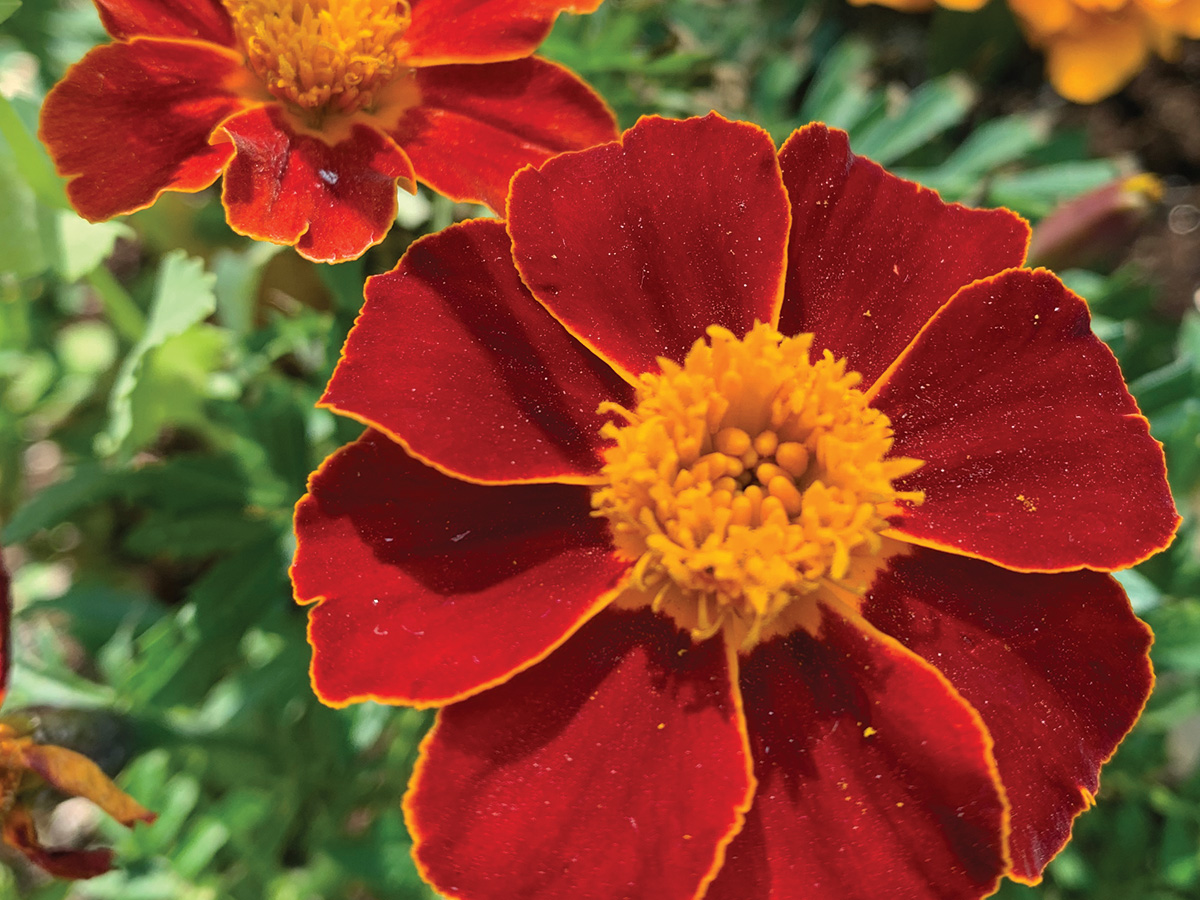Striking gold with marigolds

Photo by Deborah Maier
My garden will always have marigolds! Ask any gardener what their favourite plant is, and most will tell you they can’t choose—it’s too hard to pick. Ask what they will always grow … and plants spring to mind. Plants gardeners always grow may not be on the “favourites” list, but they fill a need. They could hold a memory, be a favourite colour or fragrance, or can handle a garden pest. And some, like the marigold for me, have an abundance of merits for growing.
When I was growing up, it seemed every garden had marigolds. They were, I now know, Tagetes patual, French marigolds, an annual. These plants are bushy and compact, only reaching between 15 and 30 cm in height. They are covered in sunny orange, yellow, and burgundy coloured flowers up to 2.5 cm wide. Most varieties are double-blossomed with petals forming domes. It was common to see these marigolds planted like short hedges around the edges of flower beds.
While these plants may not be considered trendy now, garden centres still bring in tables of them, and their seeds can always be found in seed rack collections. What has changed over the years is the petal arrangements and flower colour. Still yellow to orange to burgundy, it is new combinations and blends of these colours that have expanded the offerings. A quick look online revealed that the Stokes seed company offers over 70 different kinds of French marigold seeds.
French marigolds are great garden plants because once they start to bloom, even without deadheading they will continue to bloom until they are killed by a hard frost in the fall. While they don’t need deadheading, it is recommended to keep the plants producing large blooms. If you let some flowers go to seed in August, you can collect the seeds to grow next year. However, unless you planted only one heritage variety, the plants from the seed won’t necessarily look like the parent.
While the common name is French marigold, these plants are native to Mexico and Guatemala. It is thought that they became known as French marigolds because of how popular they were in France, after they were introduced to Europe in the 1600s.
I have also grown two other types of marigold: African marigold (Tagetes erecta) and signet marigold (Tagetes tenuifolia). These plants are also native to the Americas. I grew African marigolds for the first time last year. They have baseball-sized and shaped flowers that are typically yellow or orange, but there are some cream-coloured varieties. They are the tallest of the marigolds and can reach over a metre in height.
Signet marigolds are the most delicate marigolds, with ferny foliage and small, dime-sized flowers of burgundy, yellow, orange, or bi-colour. The word “gem” is often used in a variety of names. These plants provide an airy feel to the garden and reach 30 to 60 cm in height.
All three kinds of marigolds have strongly scented foliage making them “deer and rabbit resistant”, and less likely to be eaten by these creatures. In general, marigolds are trouble-free to grow and rarely bothered by pests; though one year, I was surprised to find small slugs eating the leaves. Grown in mass, their roots can inhibit the egg development of harmful nematodes.
My garden will always have marigolds; there are so many to choose from. They have sunny, bright, warm-coloured flowers that make me smile. They repel pests and aren’t eaten by the deer that visit my garden. They are pollinator magnets. While many folks don’t, I like the smell of the foliage. They remind me of other gardens. I have so many reasons to grow them. So, why not join me? Pick up some marigold seeds or bedding plants and grow some of these sunny flowers in your garden. French marigolds seeds can be directly sown in beds or containers now.
To learn more about gardening in the Calgary area, visit the Society’s website calhort.org and come to our Be YardSmart event on June 3.
